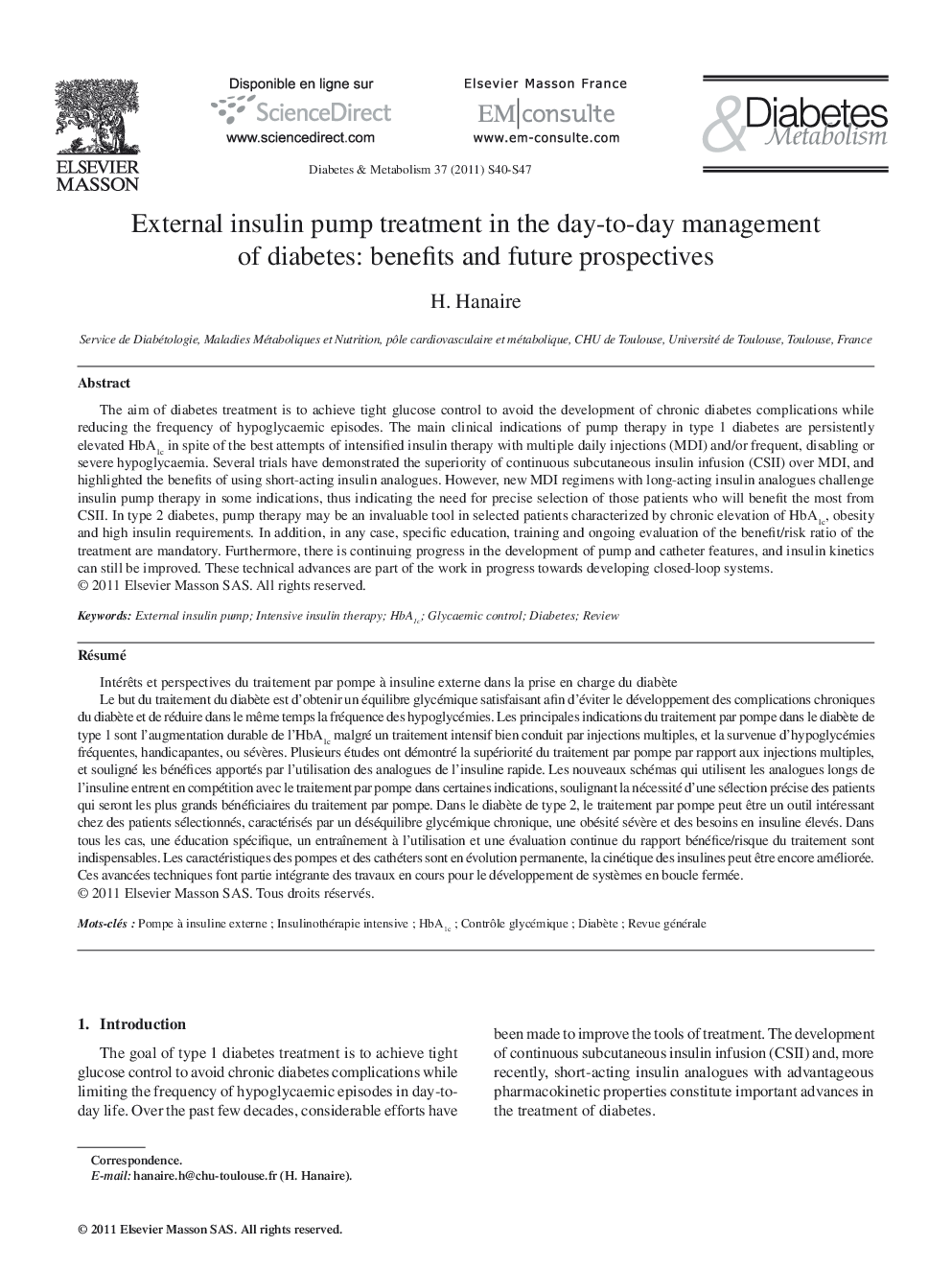| کد مقاله | کد نشریه | سال انتشار | مقاله انگلیسی | نسخه تمام متن |
|---|---|---|---|---|
| 3260157 | 1207605 | 2011 | 8 صفحه PDF | دانلود رایگان |

The aim of diabetes treatment is to achieve tight glucose control to avoid the development of chronic diabetes complications while reducing the frequency of hypoglycaemic episodes. The main clinical indications of pump therapy in type 1 diabetes are persistently elevated HbA1c in spite of the best attempts of intensified insulin therapy with multiple daily injections (MDI) and/or frequent, disabling or severe hypoglycaemia. Several trials have demonstrated the superiority of continuous subcutaneous insulin infusion (CSII) over MDI, and highlighted the benefits of using short-acting insulin analogues. However, new MDI regimens with long-acting insulin analogues challenge insulin pump therapy in some indications, thus indicating the need for precise selection of those patients who will benefit the most from CSII. In type 2 diabetes, pump therapy may be an invaluable tool in selected patients characterized by chronic elevation of HbA1c, obesity and high insulin requirements. In addition, in any case, specific education, training and ongoing evaluation of the benefit/risk ratio of the treatment are mandatory. Furthermore, there is continuing progress in the development of pump and catheter features, and insulin kinetics can still be improved. These technical advances are part of the work in progress towards developing closed-loop systems.
RésuméLe but du traitement du diabète est d’obtenir un équilibre glycémique satisfaisant afin d’éviter le développement des complications chroniques du diabète et de réduire dans le même temps la fréquence des hypoglycémies. Les principales indications du traitement par pompe dans le diabète de type 1 sont l’augmentation durable de l’HbA1c malgré un traitement intensif bien conduit par injections multiples, et la survenue d’hypoglycémies fréquentes, handicapantes, ou sévères. Plusieurs études ont démontré la supériorité du traitement par pompe par rapport aux injections multiples, et souligné les bénéfices apportés par l’utilisation des analogues de l’insuline rapide. Les nouveaux schémas qui utilisent les analogues longs de l’insuline entrent en compétition avec le traitement par pompe dans certaines indications, soulignant la nécessité d’une sélection précise des patients qui seront les plus grands bénéficiaires du traitement par pompe. Dans le diabète de type 2, le traitement par pompe peut être un outil intéressant chez des patients sélectionnés, caractérisés par un déséquilibre glycémique chronique, une obésité sévère et des besoins en insuline élevés. Dans tous les cas, une éducation spécifique, un entraînement à l’utilisation et une évaluation continue du rapport bénéfice/risque du traitement sont indispensables. Les caractéristiques des pompes et des cathéters sont en évolution permanente, la cinétique des insulines peut être encore améliorée. Ces avancées techniques font partie intégrante des travaux en cours pour le développement de systèmes en boucle fermée.
Journal: Diabetes & Metabolism - Volume 37, Supplement 4, December 2011, Pages S40–S47